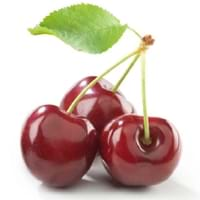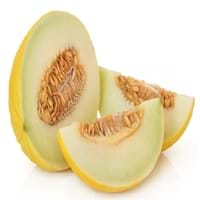Health Benefits
Arthritis prevention, Cancer prevention, Gout treatment, Heart care, Muscle pain relief, Regulation of heart rate, Treatment of alzheimer's disease
Body hydration, Cancer prevention, Gout treatment, Heart care, Treatment of skin Diseases
General Benefits
Anti oxidant properties, Anti-inflammatory properties, Controls blood pressure, Cures headache, Sore throat treatment
Body hydration, Controls blood pressure, Digestive aid, Eye care, Helps in weight loss, Improves eye vision, Maintains healthy cholesterol level, Strengthens bones
Skin Benefits
Anti-aging benefits, Brightens and lightens complexion, Skin rejuvenation, Treatment of dark spots
Anti-aging benefits, Brightens and lightens complexion, Hydrates skin, Reduces wrinkles, Treatment of dark spots
Hair Benefits
Acts as moisturizer, Protects hair, Regulates hair growth, Rejuvenates scalp
Prevents hair loss, Promotes longer and healthier hair, Protects hair
Allergy Symptoms
Anaphylaxis, Breathing difficulty, Fainting, Hives, Itching, Nasal congestion, Nausea, Swelling of mouth, tongue or lips, Tingling sensation in mouth, Vomiting, Wheezing
Abdominal cramps, Breathing difficulty, Coughing, Diarrhea, Hives, Hoarseness, Itching in eyes, Itching of mouth, Itching sensation in throat, Nasal congestion, Nausea, Skin rash, Wheezing
Side Effects
Abdominal cramps, Allergic reaction, Bloating, Intestinal gas
Allergic reaction
Best Time to Eat
Best if taken as a breakfast (or empty stomach), As a snack in the late afternoon, Don't eat after meal, Morning time (before lunch)
As a snack in the late afternoon, Don't consume at night and before bed, Eat the fresh ones, avoid mixing with any other foods, don't eat after meal., Morning time (before lunch)
Vitamin B5 (Pantothenic Acid)
Vitamin C (Ascorbic Acid)
Vitamin K (Phyllochinone)
Phytosterol
Not Available
Calories in Fresh Fruit with Peel
Not Available
Calories in Fresh Fruit without Peel
Not Available
Calories in Canned Form
Not Available
Season
Summer
All seasons
Varieties
Vandalay, Stella, Tehranivee, Sonata, Whitegold, Symphony, Blackgold, Sunburst, Lapins, Skeena and Sweetheart
Green Flesh, Yellow Rind and Orange Flesh
Inside Color
Red
Light Green
Origin
Europe, Western Asia
France
Grows on
Trees
Not Available
Soil Type
Sandy
Sandy loam, Well-drained
Climatic Conditions
Cold
Warm
Facts about
- The word cherry is derived from the Turkish town of Cerasus.
- In Oliver, British Columbia, a pie of 39,683 pounds was baked which holds the record of biggest cherry pie.
- National cherry cheese cake day is on April 23.
- The average weight of honeydew melon is 6 pounds.
- 90% of a honeydew is water.
- In middle east countries, dried and roasted honeydew seeds are consumed as snacks.
- Honeydew melons can be 15-22 mm long.
Top Producer
Turkey
China
Other Countries
Austria, Chile, China, France, Germany, Greece, Iran, Italy, Poland, Romania, Russia, Serbia, Spain, Syria, Ukraine, United States of America, Uzbekistan
Brazil, Egypt, India, Iran, Mexico, Morocco, Spain, Turkey, United States of America
Top Importer
Russia
Not Available
Top Exporter
Poland
Not Available
Botanical Name
Prunus avium
Cucumis melo
Synonym
Not Available
Not Available
Subkingdom
Tracheobionta
Tracheobionta
Division
Magnoliophyta
Magnoliophyta
Class
Magnoliopsida
Magnoliopsida
Subclass
Rosidae
Dillenhidae
Order
Rosales
Cucurbitales
Family
Rosaceae
Cucurbitaceae
Difference Between Sweet Cherry and Honeydew
We might think that Sweet Cherry and Honeydew are similar with respect to nutritional value and health benefits. But the nutrient content of both fruits is different. Sweet Cherry and Honeydew Facts such as their taste, shape, color, and size are also distinct. The difference between Sweet Cherry and Honeydew is explained here.
The amount of calories in 100 gm of fresh Sweet Cherry and Honeydew with peel is 63.00 kcal and Not Available and the amount of calories without peel is Not Available and 36.00 kcal respectively. Thus, Sweet Cherry and Honeydew belong to and category.These fruits might or might not differ with respect to their scientific classification. The order of Sweet Cherry and Honeydew is Rosales and Cucurbitales respectively. Sweet Cherry belongs to Rosaceae family and Honeydew belongs to Cucurbitaceae family. Sweet Cherry belongs to Prunus genus of P. avium species and Honeydew belongs to Cucumis genus of C. melo species. Beings plants, both fruits belong to Plantae Kingdom.









